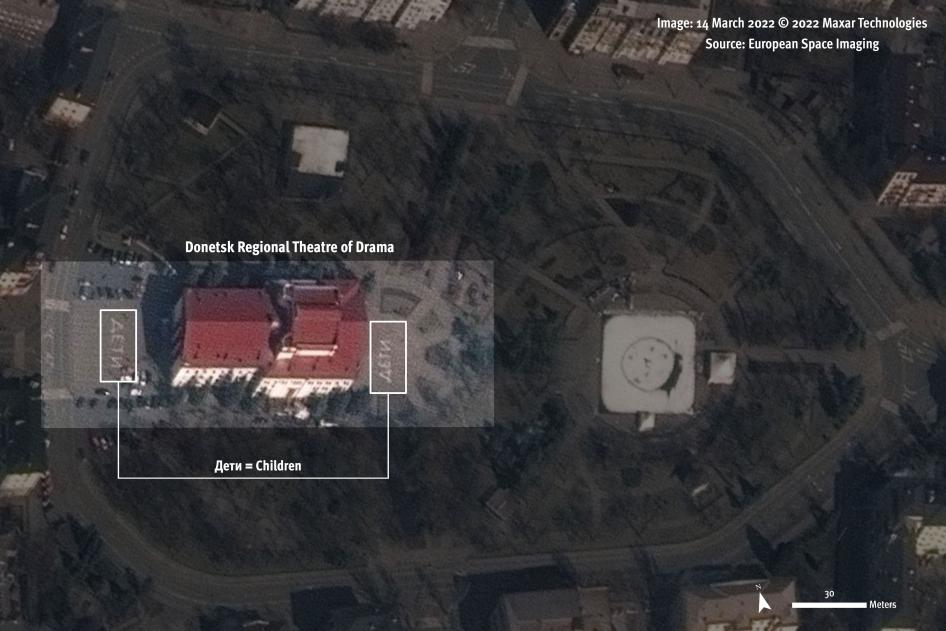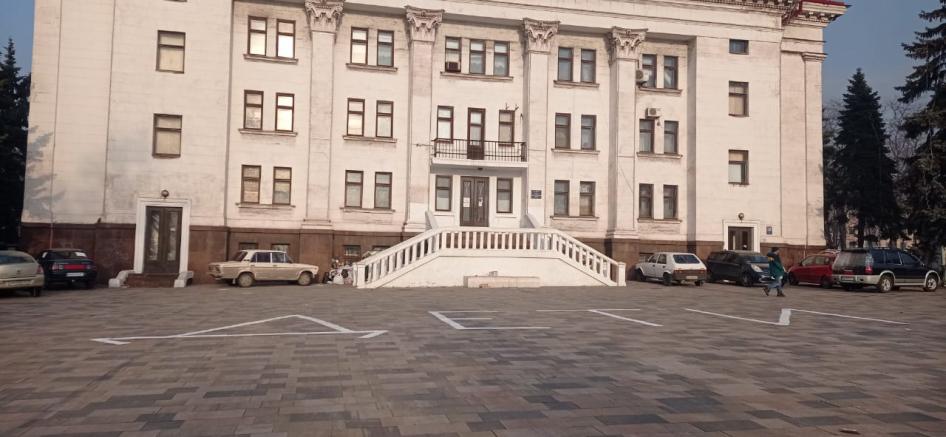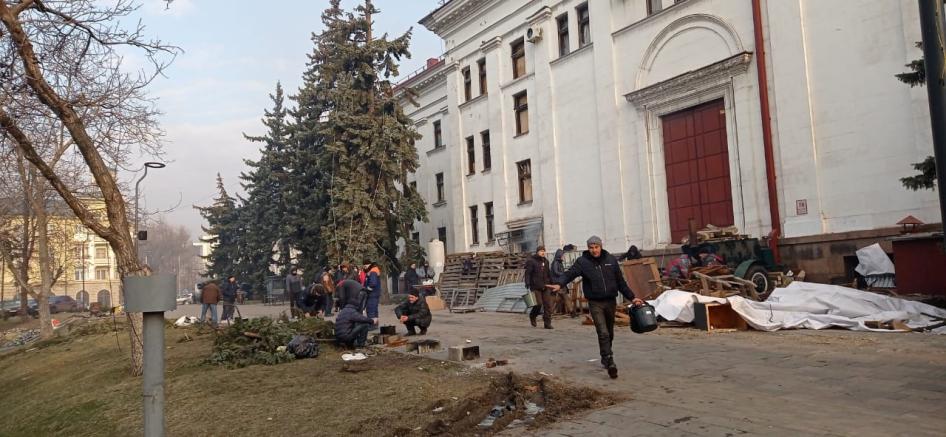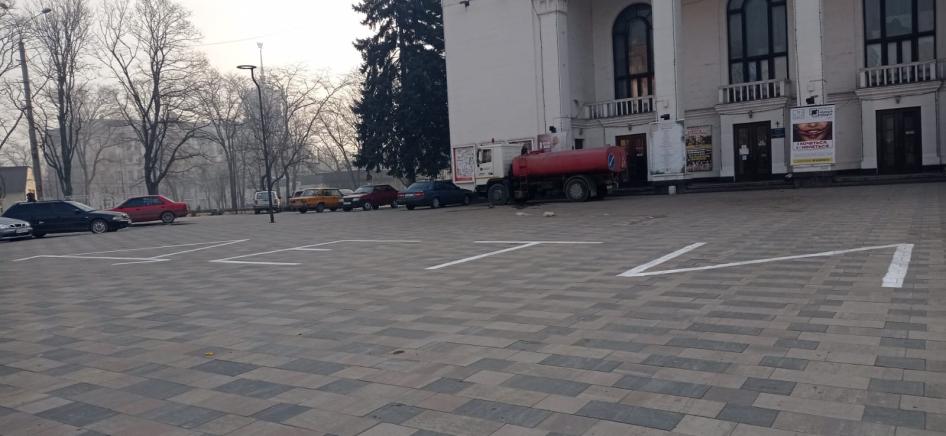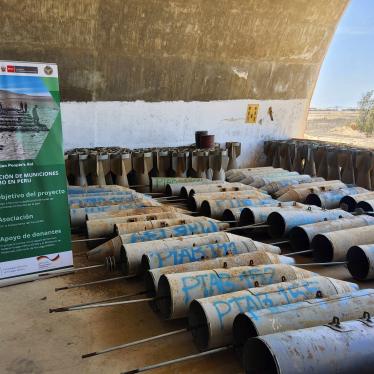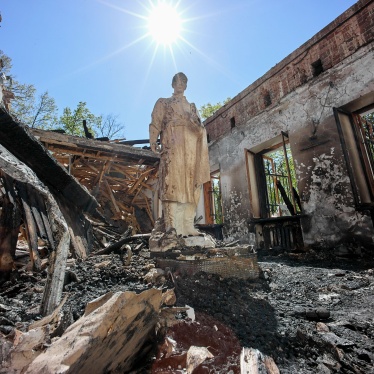Update: Local officials in Mariupol reported on March 25, 2022, that about 300 people died during the March 16 attack on the theater. Human Rights Watch has not been able to verify the casualty figures. A mother and son who sheltered in the theater for two weeks told Human Rights Watch that hundreds of people were still in the theater when they left at 9 a.m. on March 16, just hours before the attack. Human Rights Watch reviewed two videos posted on Telegram channels on March 25 that appear to be from the aftermath of the explosion. One of them shows women walking down one of the theater’s staircases; some are carrying children. The second video shows extensive damage to the building while the narrator says: “We were on the first floor and weren’t wounded, but there are probably a lot of people under these ruins who were sheltering.”
(Dnipro) – The theater hit by a Russian attack on Mariupol on March 16, 2022 had been sheltering hundreds of civilians, Human Rights Watch said today.
Pavlo Kirilenkoa, the governor of Ukraine’s Donetsk region, announced on March 16 that Russian forces had bombed the Donetsk Regional Theater of Drama, where hundreds of residents were sheltering in the besieged city of Mariupol. Petro Andryushchenko, an assistant to Mariupol’s mayor, told Human Rights Watch that his office did not yet know if any, or how many, civilians had been injured or killed. In satellite imagery of the theater from March 14, the Russian word for “children” clearly appears written twice in large Cyrillic script in front and behind the theater.
“Until we know more, we cannot rule out the possibility of a Ukrainian military target in the area of the theater, but we do know that the theater had been housing at least 500 civilians,” said Belkis Wille, senior crisis and conflict researcher at Human Rights Watch. “This raises serious concerns about what the intended target was in a city where civilians have already been under siege for days and telecommunications, power, water, and heating have been almost completely cut off.”
On March 16, just hours before the attack, Human Rights Watch interviewed over a dozen Mariupol residents who had escaped the city the day before in a convoy of hundreds of private cars and had arrived in Zaporizhzhia. Two people interviewed separately mentioned civilians sheltering in the basement of Mariupol’s theater. One of them, a doctor, said she had visited the theater in the days before she left and that between 500 and 800 civilians were staying there. The other person, who had spent the past two weeks delivering food, water, and medicine to shelters across the city, said that he had delivered aid to the theater multiple times and that it was housing between 500 and 700 civilians.
Human Rights Watch was unable to reach anyone in Mariupol by phone on March 16 to determine whether civilians had left the theater immediately prior to the attack. The doctor, however, shared four photographs of the theater that she said she took on the morning of March 15, on her way out of the city, including one that shows groups of people in civilian clothes cooking food on an open fire and carrying water buckets just outside of the theater. No military vehicles or personnel are visible in the photographs.
Human Rights Watch verified three videos posted on March 16 to a Telegram channel that publishes videos and reports from Mariupol. One of these videos shows the building from a distance with black smoke billowing out of it. Two others, one filmed from within the park where the theater stands, show flames coming from the center of the heavily damaged building. The satellite image with the word “children” shows the theater fully intact on March 14.
The laws of war require parties to the conflict to distinguish at all times between civilian objects and military objectives and each party to the conflict must do everything feasible to verify that targets are military objectives. If there is doubt as to whether an object normally dedicated to civilian purposes, such as a theater, is being used for military purposes, it shall be presumed not to be so. Directing an attack against a civilian object is strictly prohibited, as are indiscriminate attacks and attacks with disproportionate effects on civilians, and may be war crimes.
Organized evacuations of civilians in Mariupol who want to leave should be facilitated, Human Rights Watch said. Parties should allow humanitarian access for neutral and independent providers to support vulnerable civilians who may need assistance to leave, including people with disabilities, older people, pregnant people, children, and people with chronic or severe medical conditions.
